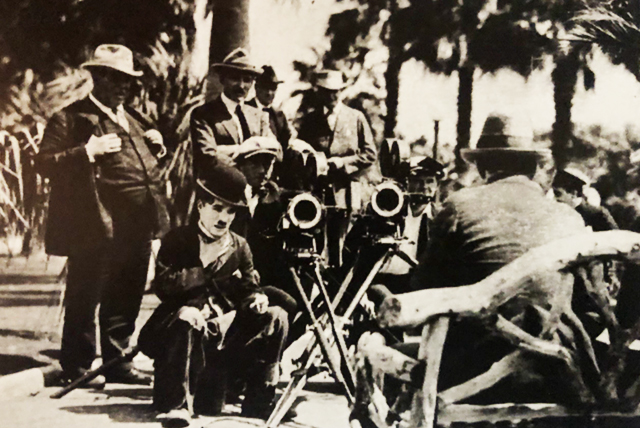
The beauty and accessibility of Beverly Hills provided the perfect backdrop for films. Studios took great advantage of the city’s lush landscapes, wide boulevards, and gorgeous mansions. Resident film stars were among the first to stage their work here. As early as 1918, Douglas Fairbanks starred in He Comes Up Smiling, distributed at the Paramount at the Spalding Estate, Greyhall. In 1921, Charlie Chaplin used Sunset Municipal Park (now, Will Rogers Memorial Park), across the street from the Beverly Hills Hotel, for scenes in The Idle Class. The Beverly Hills Hotel has been featured in may films, including Harold Lloyd’s A Sailor-Made Man (1921), the star-studded Paramount film Who’s Been Sleeping in My Bed? (1963), The Way We Were (1973), Shampoo (1975), and California Suite (1978). The city was featured in the Beverly Hills Cop and Beverly Hills Chihuahua franchises, Down and Out in Beverly Hills, Clueless and Pretty Woman.
All the major studios – Metro-Goldwyn-Mayer, Paramount Pictures, Twentieth Century Fox, United Artists (co-founded by Chaplin, Fairbanks, Pickford and D.W. Griffith), Universal – and many independent production companies filmed in Beverly Hills and brought the city’s attractions to audiences around the world. With the advent of television, programs featuring Beverly Hills raised the city’s exposure to a whole new level. From The Beverly Hillbillies to Beverly Hills 90210, viewers have been living vicariously through their favorite shows.
Film and television production enticed many ancillary trade services to locate in Beverly Hills. Talent agencies, law firms, publicity houses, public relation firms, and exhibitors were among the countless supporting businesses to establish headquarters or regional offices in the city. These support systems, in turn, created the need for additional supply-chain products and facilities, and before long almost every business enterprise in the city was in some way or another related to the entertainment industry. As the workforce grew in size and earning power, more people in those industries were happy to make their homes in the city, creating a demand for domestic services, restaurants, and, ironically, entertainment. As more international visitors came to experience the mystique of show business firsthand, demand for hotels skyrocketed. Glamour, epitomized in films, thus became the defining element in Beverly Hills lifestyle. From manor to manicure, only the world’s finest products and services took center stage.